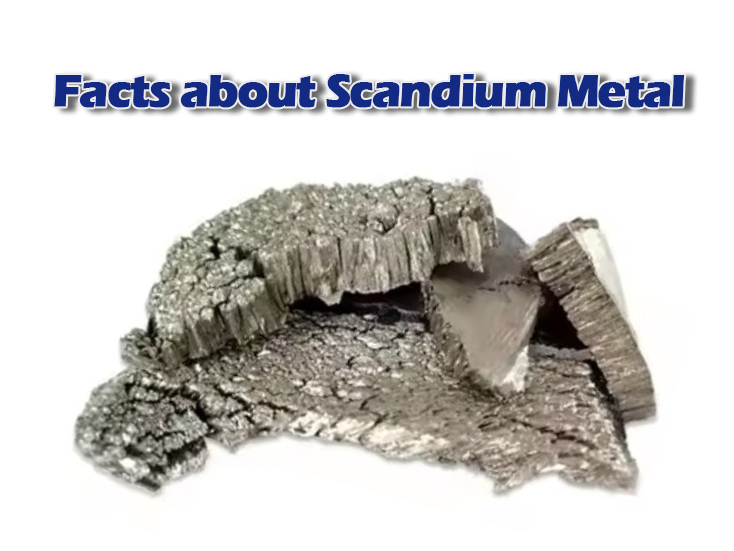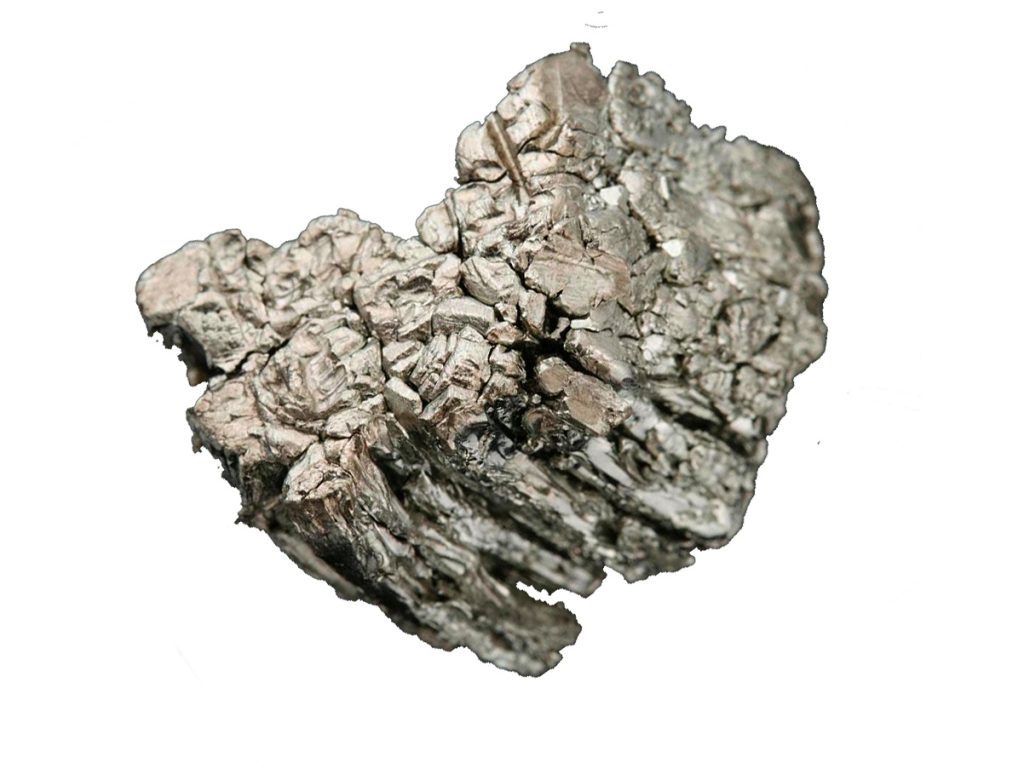
Essential Facts about Scandium
Scandium, symbolized as Sc, holds the 21st position on the periodic table and is categorized as a transition metal. Rare and valuable, scandium is known for its bright silvery appearance and remarkable properties that make it useful in a variety of high-tech applications. Despite its scarcity, scandium plays a crucial role in modern materials science, particularly in alloys used in aerospace and sporting goods. As one of the elements first predicted by Dmitry Mendeleyev, its discovery and subsequent uses have highlighted the predictive power of the periodic table, showcasing the ongoing relevance of fundamental chemistry in technological advancements.
Historical Facts: Discovery of Scandium
The existence of scandium was first predicted by the legendary chemist Dmitry Ivanovich Mendeleyev in 1869. He foresaw a missing element in his Periodic Table, which he tentatively named “ekaboron,” anticipating its properties to resemble those of boron. The actual discovery of scandium did not occur until 1879, when Swedish chemist Lars Fredrik Nilson was analyzing the minerals euxenite and gadolinite. Nilson isolated an unknown element that matched Mendeleyev’s predictions, confirming the incredible accuracy of the Periodic Table.

Nilson named the new element scandium, from the Latin “Scandia” for Scandinavia, reflecting the region where its ores were initially found. This discovery not only filled a gap in the Periodic Table but also marked a significant moment in the history of chemistry, illustrating the predictive power of Mendeleyev’s arrangements of the elements.
Facts about Physical and Chemical Properties
Scandium is distinguished by its silvery-white metallic sheen and is classified among the light transition metals. It exhibits several unique physical and chemical properties that are pivotal in various applications:
- Density and Melting Point: Scandium has a density of 2.99 g/cm³, which places it on the lighter side among metals. It melts at 1541°C and boils at 2836°C, demonstrating its stability under high temperatures.
- Atomic Structure: With an atomic number of 21, scandium’s electron configuration is [Ar]3d¹4s². This configuration explains some of its chemical reactivity and bonding behavior.
- Reactivity: Scandium reacts with both air and water. In air, it tarnishes to a pinkish or yellowish color due to the formation of scandium oxide. It reacts slowly with water to release hydrogen gas, a typical characteristic of metals.
- Oxidation States: The most common oxidation state of scandium is +3. Although rare, the +2 and +1 states can also occur under specific conditions, showcasing its versatile chemical nature.

Facts on Occurrence and Extraction Methods
Scandium is a rare element, found sparsely distributed in the Earth’s crust and often only in trace amounts. It does not occur freely in nature but is extracted from various minerals:
- Sources: Scandium is most commonly found in rare minerals such as thortveitite, euxenite, and gadolinite, primarily sourced from Scandinavia, Madagascar, and occasionally from other regions. These minerals contain only small percentages of scandium, making its extraction challenging and costly.
- Extraction Methods: The primary method of extracting scandium involves processing uranium mill tailings where scandium is a byproduct. Alternatively, scandium can be extracted from its ores by a complex process of crushing the ores, treating them with acid, and then further refining through solvent extraction and ion exchange techniques.
Facts on Industrial Uses of Scandium
Scandium is prized in several high-tech industries due to its remarkable effects on other materials, especially when alloyed with aluminum:
- Aerospace and Automotive Industries: The addition of small amounts of scandium to aluminum alloys significantly enhances their strength, heat tolerance, and corrosion resistance. These improved properties are crucial for manufacturing components in aerospace, where reliability under extreme conditions is paramount. Scandium alloys are also used in the production of lightweight automotive parts, contributing to increased fuel efficiency.
- Sports Equipment: Scandium’s lightness and strength find applications in the sporting goods industry, particularly in making high-end bicycle frames, baseball bats, and golf clubs. These scandium-aluminum alloys offer athletes better performance due to their reduced weight and greater durability.
- Lighting and Electronics: Scandium iodide is used in metal-halide lamps, where it helps produce light that closely resembles natural sunlight. This application is particularly valued in television and film production for its ability to replicate daylight conditions.
Economic Facts about Scandium
The economic landscape of scandium is shaped by its rarity and the technological advantages it provides:
- Market Value: Scandium commands a high price on the global market, reflecting both its scarcity and its utility. Prices can range significantly, but typically, pure scandium metal costs around $7000 per kilogram, depending on purity and market conditions.
- Industrial Demand: The demand for scandium is primarily driven by its applications in aerospace and high-performance sporting goods. As these industries continue to grow and seek out materials that can provide an edge in performance and efficiency, the demand for scandium is expected to rise.
- Supply Challenges: The limited supply and challenging extraction process of scandium contribute to its high cost. Most scandium production is as a byproduct of uranium extraction, which does not always align with the demand cycles of industries that use scandium.
Health and Safety Facts
Handling scandium, like many chemical elements, requires adherence to specific safety protocols to mitigate potential risks:
- Low Toxicity: Scandium is considered to have low toxicity to humans, which means it does not pose significant health risks under normal handling conditions. However, certain compounds, such as scandium chloride, can be hazardous if not handled properly.
- Safety Precautions: In industries where scandium is used, workers are advised to use protective equipment to prevent inhalation or skin contact with scandium powder or compounds. The use of fume hoods and proper ventilation is recommended to avoid exposure to dust or fumes.
- Environmental Impact: While scandium has no significant biological role, its extraction and processing can have environmental impacts, particularly if waste products are not managed correctly. It is important to ensure that mining and refining operations adhere to environmental regulations to prevent contamination of local ecosystems.
Research Facts and Future Prospects
Scandium holds promising potential beyond its current applications, with ongoing research exploring new and innovative uses:
- Advanced Materials: Scientists are investigating the inclusion of scandium in next-generation materials such as advanced ceramics and high-temperature superconductors. These materials could revolutionize industries from electronics to renewable energy.
- Energy Sector: One of the most promising areas of research involves scandium’s role in solid oxide fuel cells (SOFCs). Adding scandium to the electrolyte materials in SOFCs can significantly enhance their efficiency and operational stability at lower temperatures, making them more viable for broader energy applications.
- Environmental Technologies: Research is also focused on utilizing scandium for environmental cleanup and efficiency. For instance, scandium’s use in light-emitting diodes (LEDs) and in materials that reduce emissions from power plants offers paths to more sustainable technologies.
Summary of Key Facts
Scandium, a rare and valuable element, plays a crucial role in modern technology and industry. From its strategic inclusion in aerospace alloys to its potential in next-generation energy solutions, scandium’s unique properties offer significant benefits. Despite its high cost and the challenges associated with its extraction, the ongoing research and development in scandium applications promise to expand its uses and availability in the future. As we continue to explore and innovate, scandium stands out as a metal of considerable interest, capable of driving significant advancements in both performance and sustainability across a range of industries.
